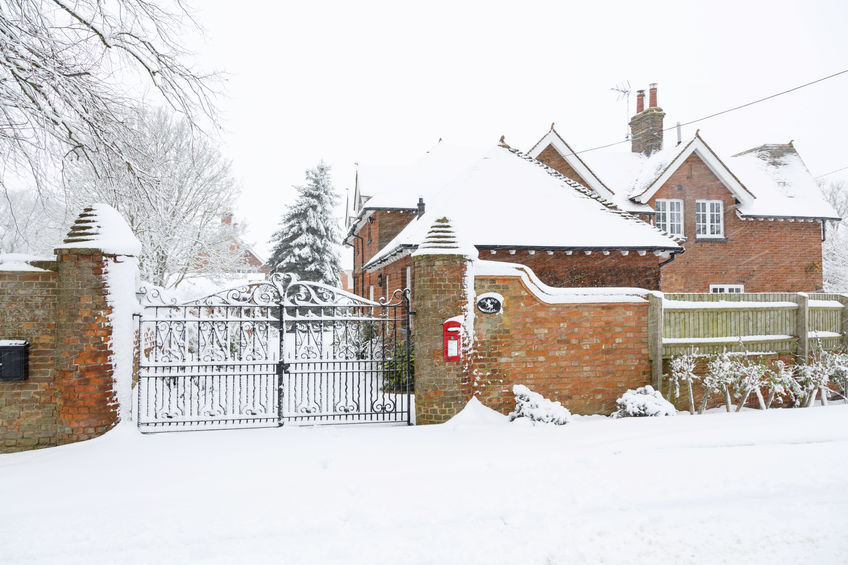Will My Generator Work in the Winter?
Your backup generator is meant to keep your home or business safe, comfortable, and running smoothly during a power outage. No matter the weather, you’ll know that you’ll never be without the protection you need and the comforts you want, as long as your generator is ready to go. With proper maintenance, your generator has the ability to run continually for days, powering appliances, lighting, and heating or cooling for your home.
How to Protect your Standby Generator During Winter
During the winter months, a backup generator needs proper maintenance in order to operate properly and efficiently. Leaves and debris build-up, freezing temperatures, snow, and ice can all cause damage to your standby generator if not properly maintained. The last thing you want during a snowstorm is to realize that your generator won’t start because you failed to maintain it at the start of the season. Here are a few ways to make sure your generator is ready for whatever winter throws your way.
Clear the area around your generator.
Your backup generator contains vents on its cabinet exterior. During the winter, it’s important to clear the area around the generator of leaves, snow, and any other debris to allow the generator to properly ventilate.
Clear a path to allow access to your generator.
After snow accumulation, shovel or snow blow a path to your generator. This allows for quick, easy access should you need an emergency repair. We also recommend clearing a path from your generator to the inlet pug on the exterior of your home for the same reasons.
Exercise your generator.
Just like you let your car run for a few minutes before driving in the winter, a generator needs to be exercised or run after long periods of inactivity during cold temperatures. This allows your generator to lubricate all moving parts and maintains important seals within your generator. Most generators turn on to exercise automatically, but this is especially important in the winter to keep everything running smoothly.
Winterize your generator.
If you’re handy, you can likely winterize your own generator with the help of a cold weather kit. A cold weather kit typically includes the following:
Controlled battery warmers
Just like any battery, your generator’s battery will lose its lifespan and won’t operate as efficiently in cold temperatures. A controlled battery warmer for your generator keeps your battery warm in temperatures below 40 degrees.
Crank case heater
Oil in your generator is vulnerable to coagulating in sub-freezing temps. A crank case heater will prevent this, allowing your generator to run smoothly, even during the coldest cold snap.
SAE 5W-30 motor oil
SAE 5W-30 is a multi-viscosity oil that can be used over a range of temperatures. The W stands for winter, the 5 stands for 5 degrees Celcius (the lowest temperature at which the oil will pour), and the 30 means the oil will have a viscosity rating of 30 and 100 degrees Celcius. What does all of this mean? This oil will help keep your generator running properly, even in temperatures when other oils might lag behind.
Schedule generator maintenance and service with Midwest Generator Solutions.
By far the easiest, most efficient, and best way to make sure your backup generator will be ready for winter is to schedule an appointment with the generator experts at Midwest Generator Solutions. We have the training, tools, and expertise to make sure your generator is ready when you need it.
Don’t wait until the storm hits. Call Midwest Generator Solutions today.


cwn4i2
Hello friends, nice post and pleasant arguments commented at
this place, I am actually enjoying by these.
I saw similar here: Ecommerce
Excellent post. I was checking constantly this blog and I’m impressed!
Very useful information specially the ultimate phase 🙂 I take care of such information a lot.
I used to be looking for this particular information for a long time.
Thank you and good luck. I saw similar here: Sklep internetowy
Hi! Do you know if they make any plugins to help with SEO?
I’m trying to get my blog to rank for some targeted keywords but I’m not seeing
very good results. If you know of any please share.
Thank you! You can read similar text here: Najlepszy sklep
Hi there! Do you know if they make any plugins to assist with
Search Engine Optimization? I’m trying to get my blog to rank
for some targeted keywords but I’m not seeing very good success.
If you know of any please share. Cheers! You can read similar blog here: Sklep internetowy
Hello! Do you know if they make any plugins to assist with SEO?
I’m trying to get my blog to rank for some targeted keywords but I’m not seeing
very good gains. If you know of any please share.
Thanks! You can read similar art here: Sklep
Hi! Do you know if they make any plugins to help with SEO?
I’m trying to get my blog to rank for some targeted
keywords but I’m not seeing very good success. If you know
of any please share. Kudos! You can read similar blog here:
Sklep online
pj4w6r
z14yaw
Hello! Do you know if they make any plugins to help with SEO?
I’m trying to get my blog to rank for some targeted keywords but I’m not seeing very good
success. If you know of any please share.
Kudos! You can read similar blog here: Auto Approve List
I could not resist commenting. Well written!
My page … vpn code 2024
Hey just wanted to give you a quick heads up.
The words in your content seem to be running off the
screen in Opera. I’m not sure if this is a format issue or something to do with
internet browser compatibility but I figured I’d post to let you know.
The design and style look great though! Hope you get the problem resolved soon. Kudos
Also visit my web-site :: vpn special coupon